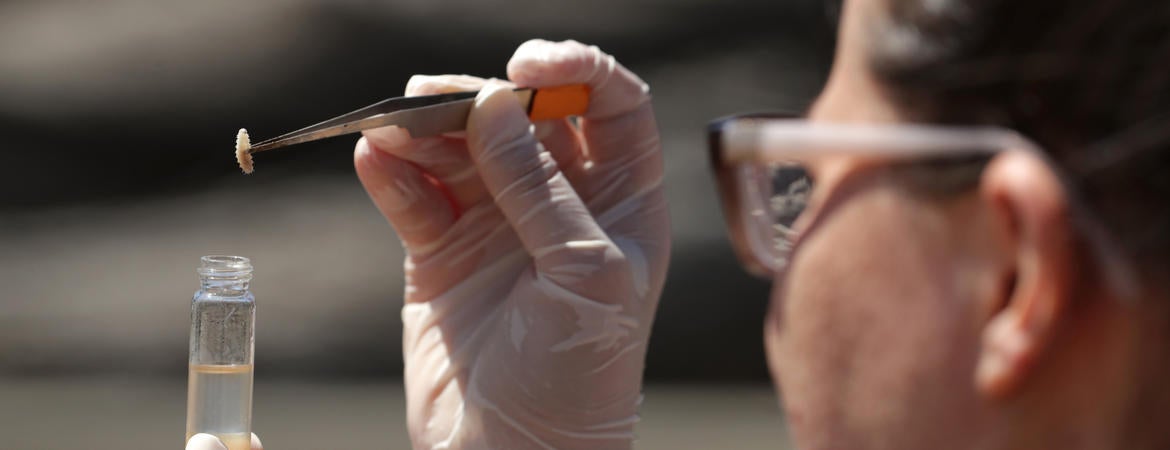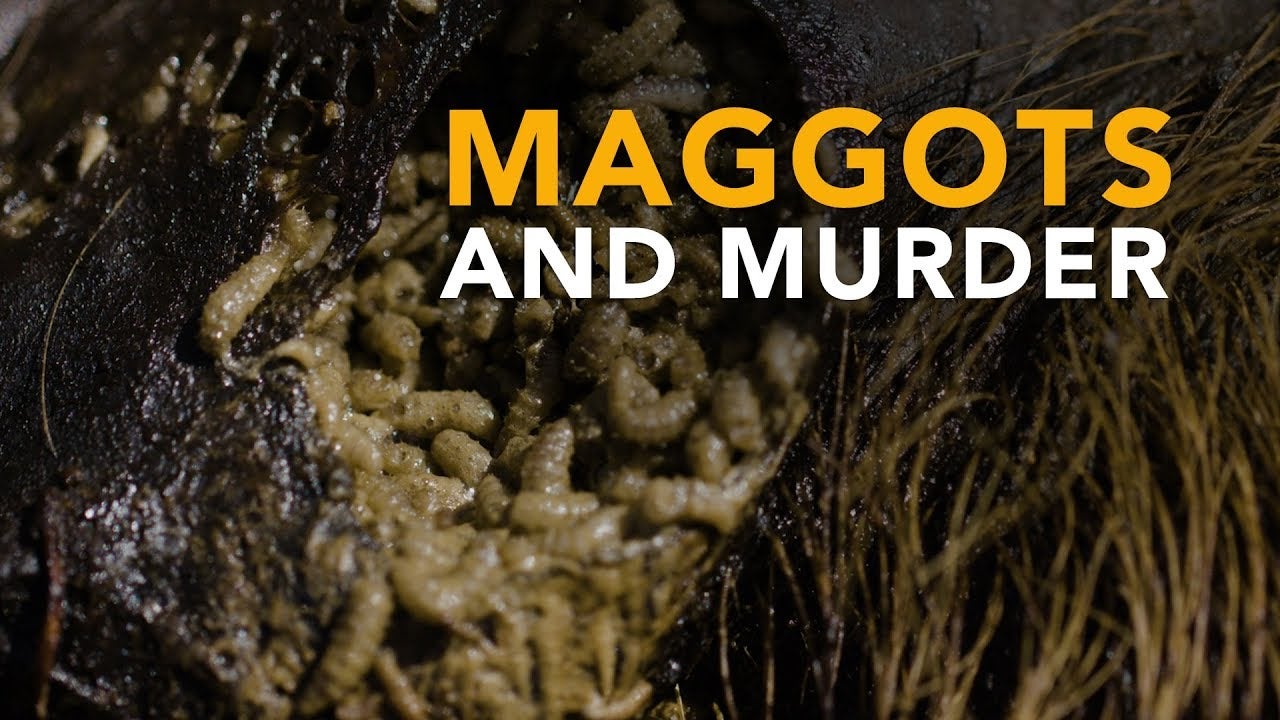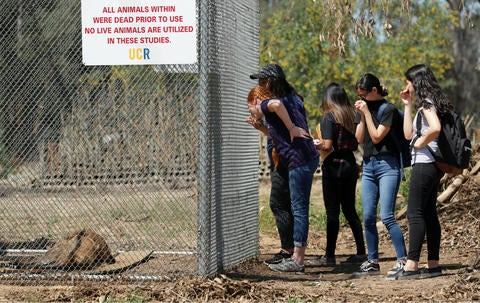
Taking care to stand upwind, UC Riverside students display stoic professionalism as they collect insects off a pig carcass in 90-degree heat. This scene from a class in forensic entomology could have been ripped from any TV police drama and in some ways, it was.
Professor Alec Gerry said intense student interest in crime scene shows led him to develop the course, where students learn to interpret insect clues to aid legal investigations.
After taking her turn collecting maggots and flies off the bloated pig for later examination, biology student Ericka Agredano described her motivation to enroll. “I love Bones and CSI and wanted to know for myself what’s real and what’s not,” she said.
She is getting the education she wanted. Gerry moves his students beyond the ick factor so they can one day offer valuable information about criminal as well as civil litigation cases that cannot come from any other source.
Coroners have about 36 hours to use a body’s temperature, discoloration and level of stiffness to estimate its time of death. By this time, the body has cooled, it’s finished with rigor mortis, and blood has pooled wherever it is going to. According to Gerry, after this time, insect evidence is often the most accurate, and perhaps only, means to estimate when death occurred.
During the first few days after death, flies specializing in decomposition of animal and human remains will deposit eggs on a corpse. The eggs hatch, and fly larvae develop. If an entomologist knows the temperatures the body was exposed to, he or she can determine the age of the maggots and then backdate to estimate time of death. Or at least, estimate the time that the corpse was first exposed to flies.
The estimation is as much science as it is art. Gerry said that one of the most difficult concepts for students is accounting for the way insects age. Whereas humans age at a constant rate over time, insects develop at a rate determined by both time and temperature. Therefore, an entomologist must consider multiple factors from a crime scene, including insect species, whether a body was in sun or shade, high or low humidity, or subject to high winds, to name a few.
Many crime drama fans may already know that an entomologist can supply this kind of information to police. Less commonly known are some of the other kinds of evidence that can be derived from bugs. Because some species are specific to a geographic region, they can tell you whether a body has been transported from somewhere other than the place it was found.
Additionally, Gerry said insects can be tested for drugs. An individual may have died from an overdose, but by the time the body is discovered, the drugs may no longer be detectable. However, insects that consumed the decomposing tissue can still test positive for drugs that were once present in the body of the deceased.
It isn’t likely that employers will start using insects to drug test prospective employees anytime soon. “You’re likely already dead if you’re being eaten by flies,” Gerry said.
A person has to be dead for flies to consume you. However, certain fly species are associated with physical abuse or neglect of the living. Wounded body parts, fecal matter or urine attract different flies than a corpse might. Post death, if these species are found in addition to the traditional ones associated with decomposition, this introduces potential evidence of another crime before the death occurred, Gerry said.
Though crime scene clues may point to grisly realities, the challenge of interpreting the evidence is more exciting than grubs and gore are repellant to students, as evidenced by the waiting list this year for Gerry’s course.
Jocelyn Verduzco’s only concern as she scooped maggots into “meat packets,” tin foil containers containing chicken liver for feeding the maggots, was whether she was being gentle enough with the evidence.
“If you can’t handle this, you can’t handle human forensics,” she said. Verduzco eventually wants to use a medical degree to help solve crimes. By taking this course at what is considered to be among the top entomology departments in the world, she’s given herself a good start in that direction.
Whether the students go on to a career in helping solve crimes or not, Gerry hopes students ultimately walk away from the class with an appreciation for deep learning in an age of instant gratification. “You can’t scan an insect with a smartphone and have an accurate accounting of the insect evidence,” he said.
At the very least, he encourages students to develop an even greater appreciation for the mysteries that remain in the natural world and for the field of entomology. “Insects are some of the smallest creatures on Earth,” he said. “But there’s so much they can teach us about ourselves.”






